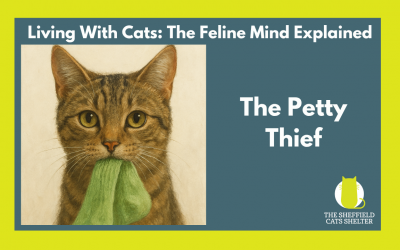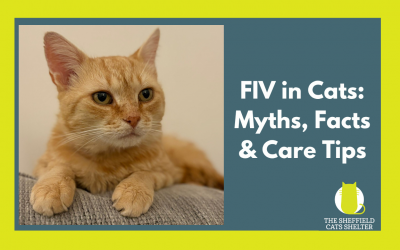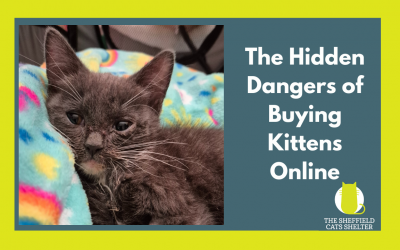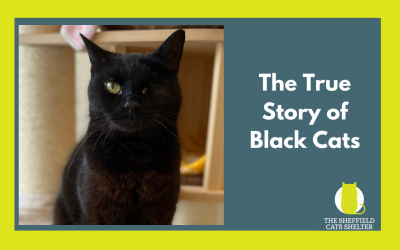Let’s face it, we often own a cat that doesn’t need a great deal of grooming by us who love being groomed, and the other side of the coin, cats that do need some help staying well groomed – and hate it!
All Cats have very different tolerance levels – what one cat may tolerate for 5 minutes, another cat may only tolerate for 5 seconds!
We have to respect this and understand that some actions we take as caring pet owners – like grooming and tableting (we’ll get to this in a separate blog) – aren’t always pleasant for some cats.
So, it’s our job to make grooming as pleasant and positive as possible for them, and to make sure the cat believes they are in CONTROL the whole time.
It is worth the patience and work you put in with your cat, as grooming has so many benefits:
- Grooming helps to remove excess grease, dirt and dandruff
- Builds a bond between you and your cat
- Gives you the opportunity to check your cat over regularly between vet visits, and identify any new lumps, bumps, scans or pesky parasites
- Helps reduce the number of furballs
- Grooming stimulates the the body to produce healthy, natural oils to keep the coat glossy and healthy
- Prevents quite as much hair being spread on the sofa and bed!
Cats are pretty well equipped to take care of their own coat, having a spiny tongue and a range of flexibility that we’re all jealous of. It is important for us to complement this, and assist rather than aggravate.
Choosing the right brush
There are a number of grooming brushes available, and it can be daunting if you’re unsure which brush to use for your cat.
Here is a short guide to the most popular brushes and what kind of coat they are used with:
Slicker brush – for most coat types, for removing dirt and excess hair
Double sided brush – for short haired coats, for removing dirt and tangles with the pin side, then smoothing the coat off with a lovely shine after with the bristle side
Grooming mitt – for most coats, ideal for gathering the wispy top hairs from a coat
Furminator – for most coats, to remove the dead fur from top and bottom coats, can be a little much as a first brush
Moulting comb with differing pin lengths – for most coats, to detangle knots and remove excess dead hair
Pin paddle brush – for most coats, to remove dirt and tangles and smooths out the coat for a glossy finish
Rubber brush – for most coats, to remove loose fur and massage action to stimulate the production of healthy oils which keep the coat pristine
Bristle brush – for most coats, to smooth off the coat, but does not detangle
Remember to choose an adequately sized brush – you don’t want to use a big dog sized brush on a little old lady cat….she probably won’t appreciate that! Nor do you want to use a teeny tiny brush on a fully grown adult cat, otherwise you might not get the results you hope for.
Treats
Treats as a reward are usually welcomed by cats – Dreamies, lickelix, meaty sticks (if you’re watching their weight, use low cal snacks or amend their usual meal portion size slightly) will all be something your cat will enjoy and attribute to a positive experience.
Choosing the right time
You want to do this exercise when the cat is relaxed and somewhere comfortable for them.
Don’t try this if they’ve just had a stressful vet visit, a spat with another cat in the home, or if you’re in a rush – you must take your time and go at the cats’ pace.
It’s also helpful to do this at the cat’s level, such as on the floor, or on the bed if the cat is up there with you. You don’t want to be looming over your cat, or pinning them down to make them stay, it all has to be on their terms – remember, they are in CONTROL…or so they think…
It may be useful to give your cat a little play session with a wand toy before starting the grooming process. When cats are burning energy with play (hunting), they have a certain pattern to follow, which is usually PLAY – EAT – GROOM – SLEEP – REPEAT.
If you can sort out the PLAY, then give them a little treat to EAT, they will then be more likely to accept a GROOM-ing session, and then have a little SLEEP.
Introduction to the brush – no actual grooming
Don’t go straight in for the full body groom!! That’s a big no-no when starting out.
Your cat must become accustomed to this new piece of equipment you are trying to touch them with. Remember, cats NEED to feel like they are in control, so make them think they are!
Either hold the brush gently, low down so that your cat can see it and investigate it, or place it on the floor and allow the cat to explore.
They will want to sniff it, then they may even rub their own face on it a little to dispense their scent.
If this is the case, you can gently hold it at their chin level, and again allow them to sniff it, rub their chin or cheeks on it, sniff it again, and then they may even get bored and walk off.
At this point, we have success………I know it seems weird to say that not grooming the cat is success, but what the cat has had is a successful and positive introduction to the brush. The cat has investigated a new item and as long as they feel happy when they leave the new item, that’s a positive!! It’s all about the little wins in the world of cats!
Do this a couple of times to get your cat really confident with the brush coming out.
Where to start with the actual grooming
Do you recall what we said about little wins, well the first half a dozen grooming experiences want to be just that!
No hour long brushing sessions, don’t try to groom every inch of your cat in record time, don’t think you’re going to get them fully groomed everyday…..unless you have a cat who already loves being groomed!
Do celebrate the positives, do reward with treats and playtime, and do always go at your cats pace – this may be different from day to day, recognise it and adjust your behaviour accordingly (ie. if the cat is clearly not in the mood for a grooming session, tail is swishing, ears are back, they’re giving you the stink eye – just STOP. Leave them alone and come back another time).
When your cat is happy to be touched with the brush, you want to start at their chin and cheeks, and from there run brush gently from cheek to rib end, just 2 or 3 strokes, then work down further, but pay attention to your cat’s reaction. They might have areas of their body they aren’t happy to be touched, so be aware of this and don’t overdo it in those areas. Make sure to brush in the direction of the hair – don’t brush against the grain….how would you like it?
Again, just have a couple of passes over their body, and then stop and give praise and a reward.
Try one side one day, then the other side another day, and work your way around the cat’s body little by little.
At all times, look out for the beginnings of the following behaviours and stop what you are doing if you spot them:
- Tail swishing/swatting
- Tense body
- Fidgeting, trying to move away
- Hissing
- Lip licking or exaggerated swallowing
- Rippling along the cat’s back
- Any attempts to swat you or nip/bite
All of these behaviours point to the cat not being happy with their current situation, so stop what you’re doing, leave the cat to it and try again later or another day.
If you have a setback, don’t be disheartened, you only fail if you don’t try!
Some cats may never fully get used to being groomed by us, but some may learn to tolerate it for long enough that it makes a difference to their coat quality and wellbeing.
Some cats will create an amazing bond with you because of great grooming sessions!
You never know until you try!
FAQs
Does my cat need a bath?
Absolutely not! Unless your cat has been doused in a toxic substance or brushed past some lilies, your cat does not need a bath. Cats are notoriously clean animals and do a great job bathing themselves.
What if I don’t manage to brush my cat entirely everyday?
Don’t worry, something is better than nothing, and our priority should always be the cat and their happiness and wellbeing.
What if I spot something on my cat that shouldn’t be there while I’m grooming?
It is always advisable to contact your vet if you find anything out of the ordinary on your cat. Lumps, bumps, scabs or matts should be investigated. Pesky parasites can also cause a problem for your feline friend, so consulting a vet will ensure they are protected with a decent parasite treatment.
The vet or vet nurse will also be able to clip out any niggly matts quickly if any are causing an issue.





